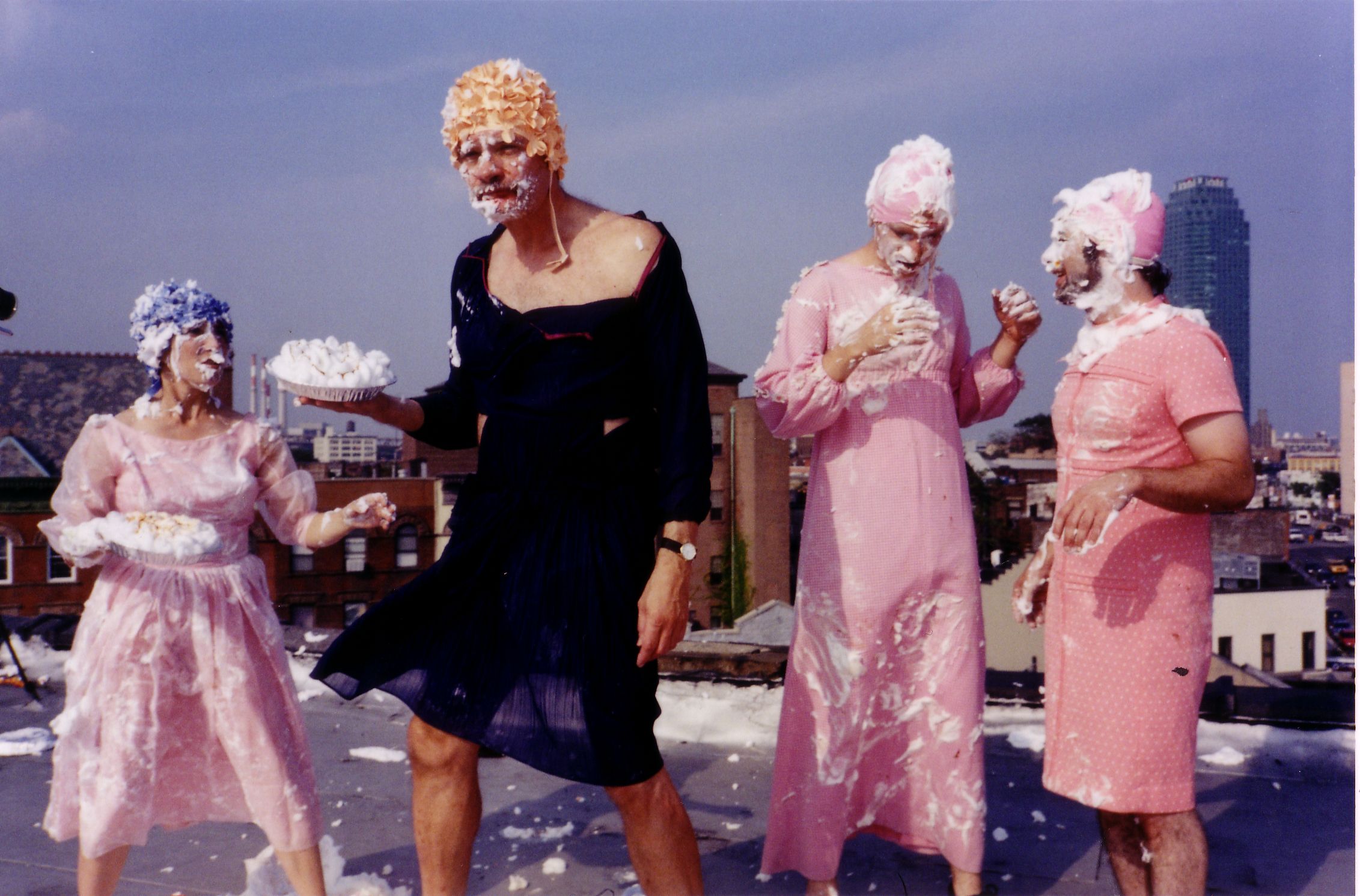USA, Film, 2013
Marie
Losier

The filmmaker and curator Marie Losier stages unconventional documentary artists’ portraits of heroes, personal friends and idols of the underground scene. Her work is known worldwide at major museums and renowned festivals in movie theatres and galleries. From the “Tate Modern” to “Centre Pompidou,” from the Rotterdam Filmfestival to the “Cinémathèque française”, her productions are regularly shown at important museums and festivals. She was invited to the 2006 “Whitney Biennial” in New York City. Recently, retrospectives of her work were shown at the Berlinale, the “Harvard Film Archive”, “Cornell Cinema” as well as at the film festivals of Seattle, Bafici, and Gijon.
Born in France, in 1972, she lives since seventeen years in New York City. She studied American literature in Paris and finally painting at Hunter College in New York. Since 2000 she is responsible for the film program of the “Alliance Française” in New York. In addition, she organizes the programs of two other film institutions in New York City and serves as professor at several universities.
In her work to date, her portraits have largely included those of avant-garde directors such as Mike and George Kuchar, Guy Maddin, Richard Foreman, Ken Jacobs, and Tony Conrad. And her protagonists praise her work. The performance artist and musician Gennesis Breyer P-Orridge refers to her as a “documentary Fellini.” Guy Maddin calls Marie Losier the most “effervescent and psychologically exact portraitist” working in film today. “No one makes films anything like Marie, Edith Sitwell’s inner Tinkerbell!”
Marie Losier nears the artists she portraits in a playful and dreamlike manner. She avoids classical interview situations. Some of her productions are as bizarre as moving: a woman gives birth to a pair of hands; an animated cartoon figure tries in vain to devour her fist; twenty people climb through a pot filled with 280 pounds of spaghetti. Simultaneously Marie Losier has a conspicuous love of the beginnings of cinema. She often uses a classical 16-mm camera for her works, quotes optical effects of the past to the same extent as she does extravagant visual effects from underground films. The Berlin Institute for Film and Video Art “Arsenal” accompanies and supports Maria Losier’s creations since 2007. A wide selection of her films meanwhile belong to the permanent collection.
In her 2011 The Ballad of Genesis and Lady Jaye Marie Losier captures the unusual love story of Genesis Breyer P-Orridge and his life and art companion Lady Jaye. Through cosmetic surgery they begin to merge into “one and the same person”. Influenced by Brion Gysin’s and William Burroughs’ “Cut Ups”, they intended to dissolve their identity to the advantage of a new and third one. P-Orridge explains that his project has nothing at all to do with gender studies. “The body is only the suitcase in which we are carried about in. Ultimately, androgyny plays a role in thinking and the consciousness.” Marie Losier transports this radicalism in her documentary montages via P-Orridge’s voice over and a wide range of visual material. The filmmaker describes her narration as a forest fire. A rapid and wild patchwork that leads to depicting the theatrical moments and the dynamics in the artist couple’s life on another level. Alongside his boundary-breaking performance art, P-Orridge is primarily known as one of the musical innovators of Acid House and Techno. The premiere of Marie Losier’s first feature film was celebrated at the Berlinale, where it won two prizes – the “Teddy” for best documentary film and the “Caligari Film Prize”. It was shown in theatres in Germany, France, Canada and USA, as well as at an additional 63 festivals and received numerous awards.
In a different way varied, too, is Tony Conrad, whom Marie Losier portrayed in Tony Conrad, DreaMininmalist in 2008. Not only is the American an avant-garde filmmaker but also a video artist, musician, composer, sound artist, professor and writer. He is an innovative colleague of John Cale and Lou Reed. During its first performance, his most famous film, The Flicker, from 1966, led to epileptic seizures in the audience. Marie Lousier presents the multitalented artist as an in-darkness-floating and grimacing creature, hopping on a bed playing a mini-violin.
In Berlin she plans to complete a portrait of the only identical, Russian art twins Masha and Natasha Pechatnikov, whose private life and work are so intertwined they seem like one person. In addition, she is planning a work based on film pioneer Georg Wilhelm Pabst. In collaboration with actress and director Susanne Sachsse, Vaginal Davis, Marc Siegel, and singer Peaches the filmmaker also plans to pay homage to silent film as well as musical films from the 1950s.
Text: Maike Wetzel
Translation: Karl Edward Johnson
2011 Byun, Objet Trouvé (Short Film, 16 mm, 7’) with Byun Chong
2011 The Ballad of Genesis and Lady Jaye (Documentary Film, 16 mm, 72’)
2010 Cet Air La (Kurzfilm, 16 mm, 3’) with April March and Julien Gasc
2009 Slap the Gondola! (Short Film, 16 mm, 15’) with April March, Tony Conrad and Genesis P-Orridge
2008 Tony Conrad, DreaMininmalist (Short Film, 16 mm, 27’)

